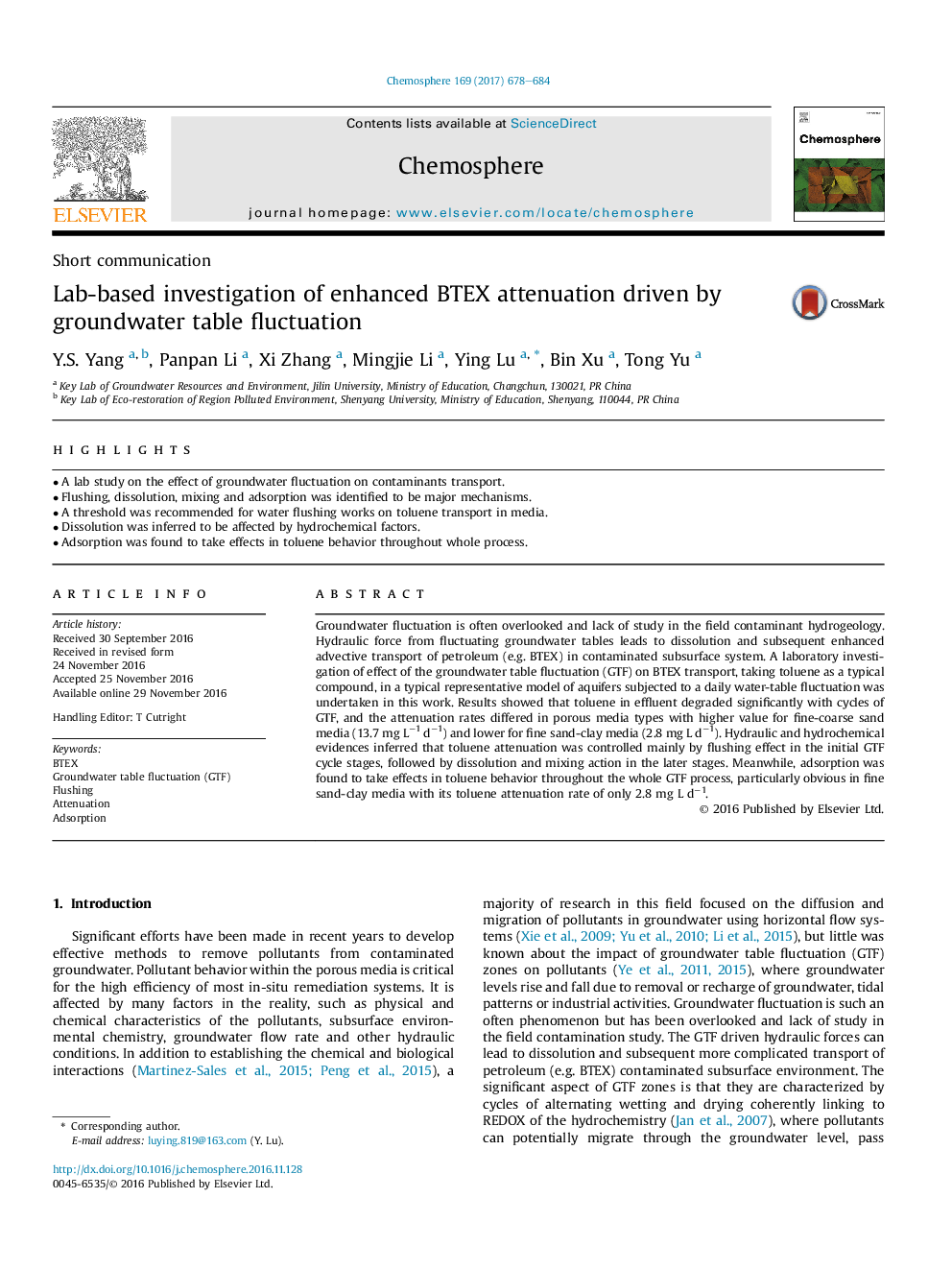| Article ID | Journal | Published Year | Pages | File Type |
|---|---|---|---|---|
| 5747056 | Chemosphere | 2017 | 7 Pages |
â¢A lab study on the effect of groundwater fluctuation on contaminants transport.â¢Flushing, dissolution, mixing and adsorption was identified to be major mechanisms.â¢A threshold was recommended for water flushing works on toluene transport in media.â¢Dissolution was inferred to be affected by hydrochemical factors.â¢Adsorption was found to take effects in toluene behavior throughout whole process.
Groundwater fluctuation is often overlooked and lack of study in the field contaminant hydrogeology. Hydraulic force from fluctuating groundwater tables leads to dissolution and subsequent enhanced advective transport of petroleum (e.g. BTEX) in contaminated subsurface system. A laboratory investigation of effect of the groundwater table fluctuation (GTF) on BTEX transport, taking toluene as a typical compound, in a typical representative model of aquifers subjected to a daily water-table fluctuation was undertaken in this work. Results showed that toluene in effluent degraded significantly with cycles of GTF, and the attenuation rates differed in porous media types with higher value for fine-coarse sand media (13.7 mg Lâ1 dâ1) and lower for fine sand-clay media (2.8 mg L dâ1). Hydraulic and hydrochemical evidences inferred that toluene attenuation was controlled mainly by flushing effect in the initial GTF cycle stages, followed by dissolution and mixing action in the later stages. Meanwhile, adsorption was found to take effects in toluene behavior throughout the whole GTF process, particularly obvious in fine sand-clay media with its toluene attenuation rate of only 2.8 mg L dâ1.
